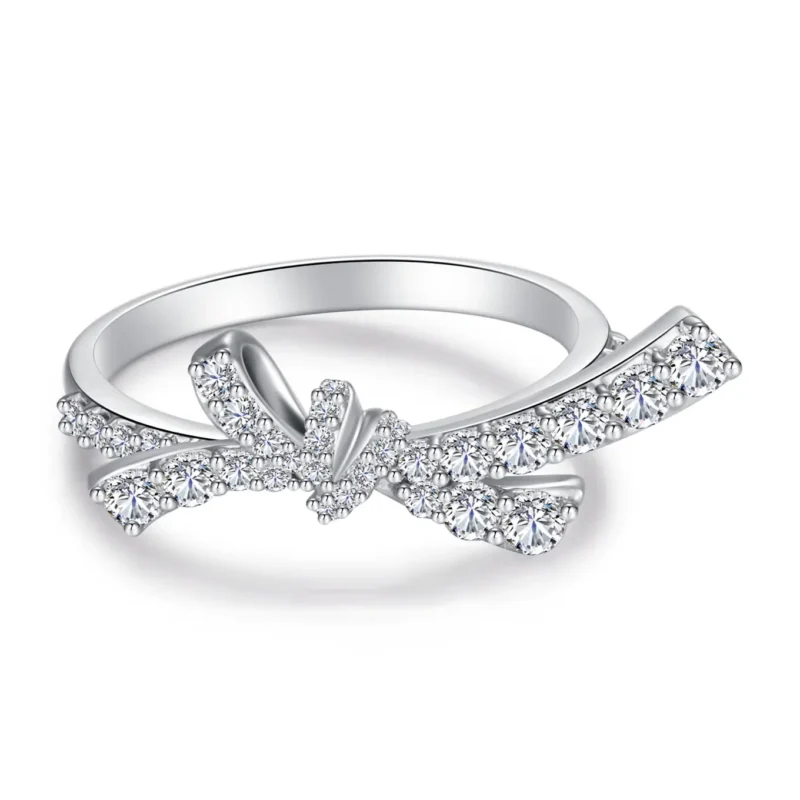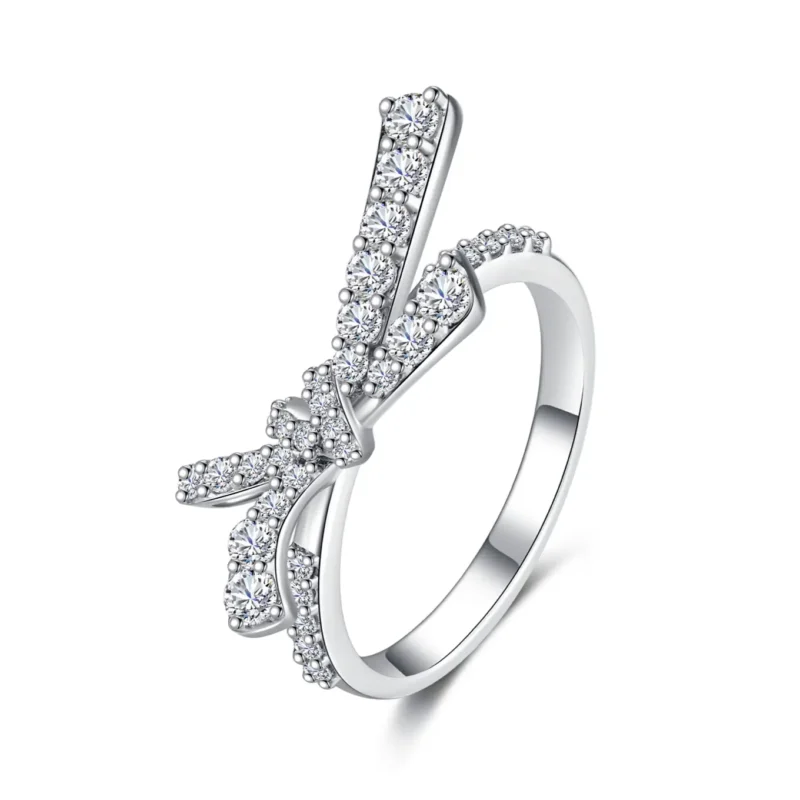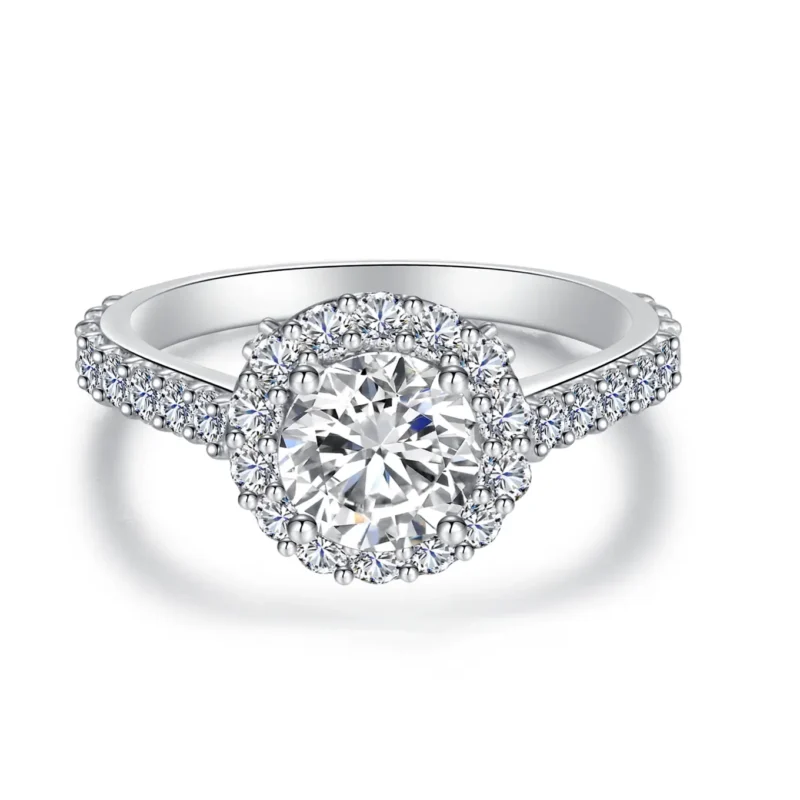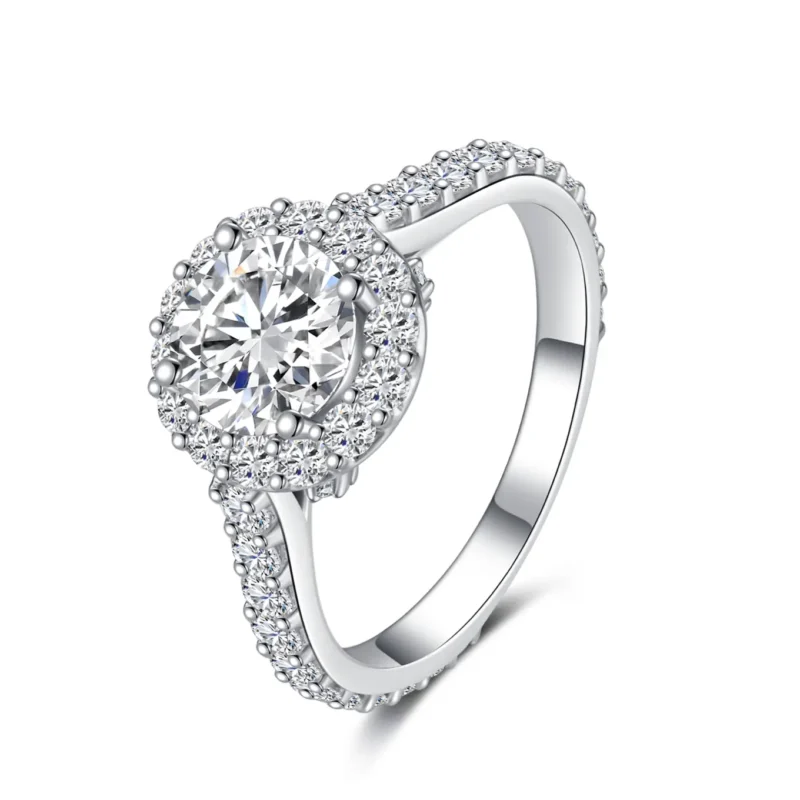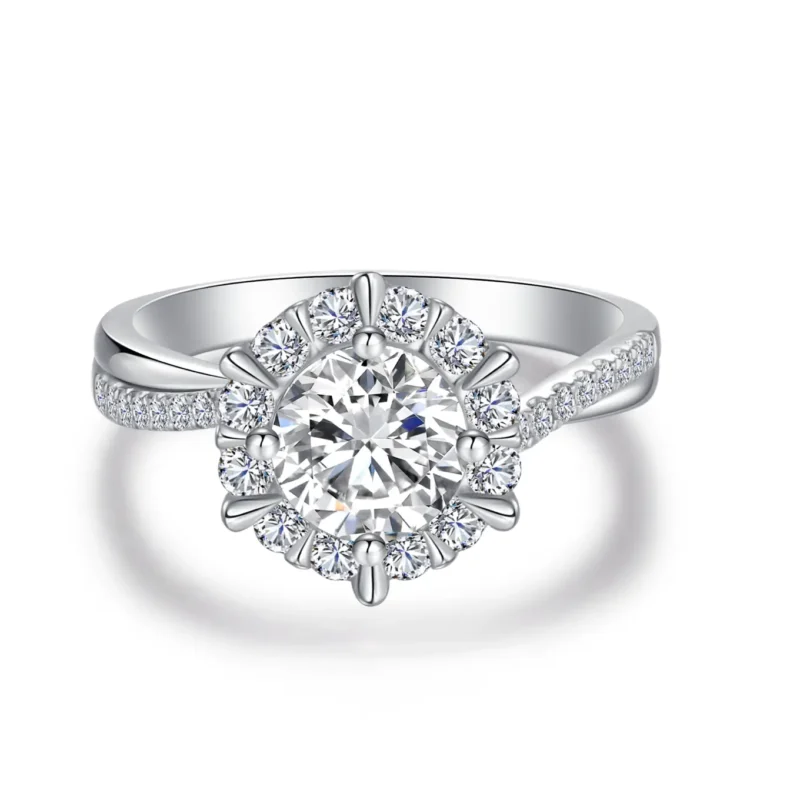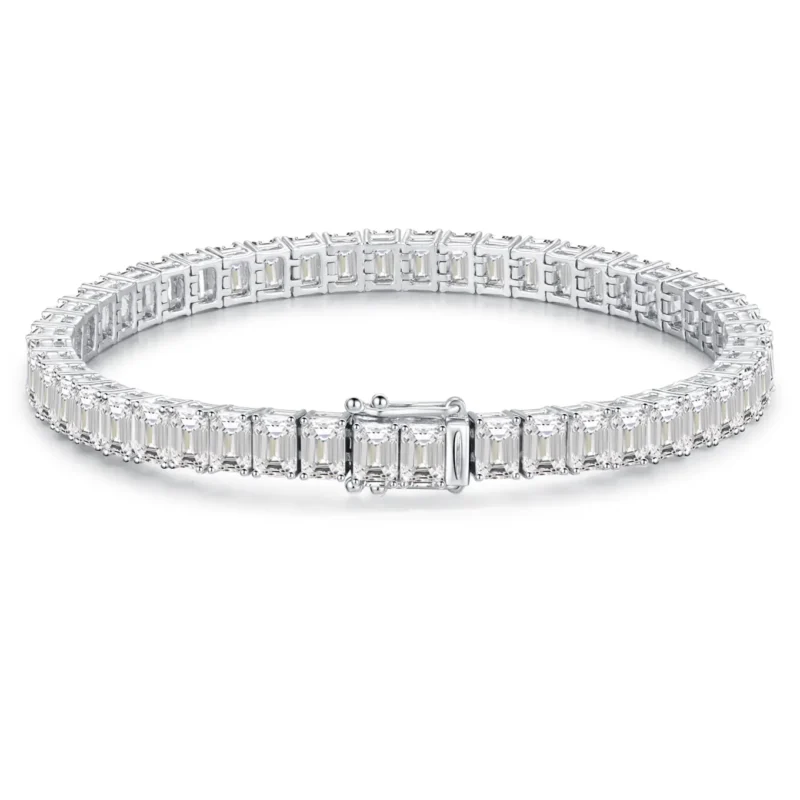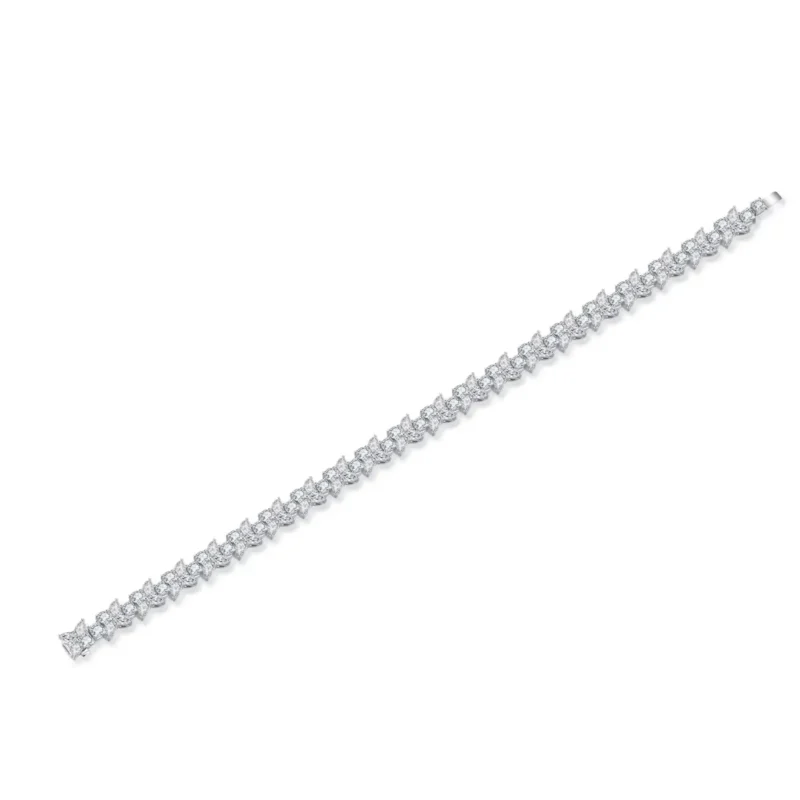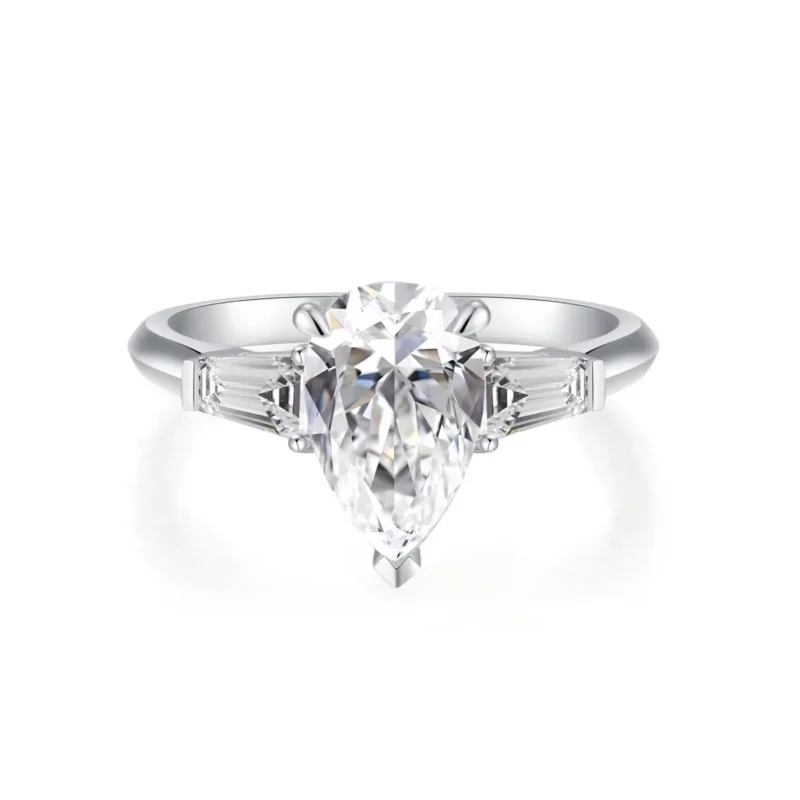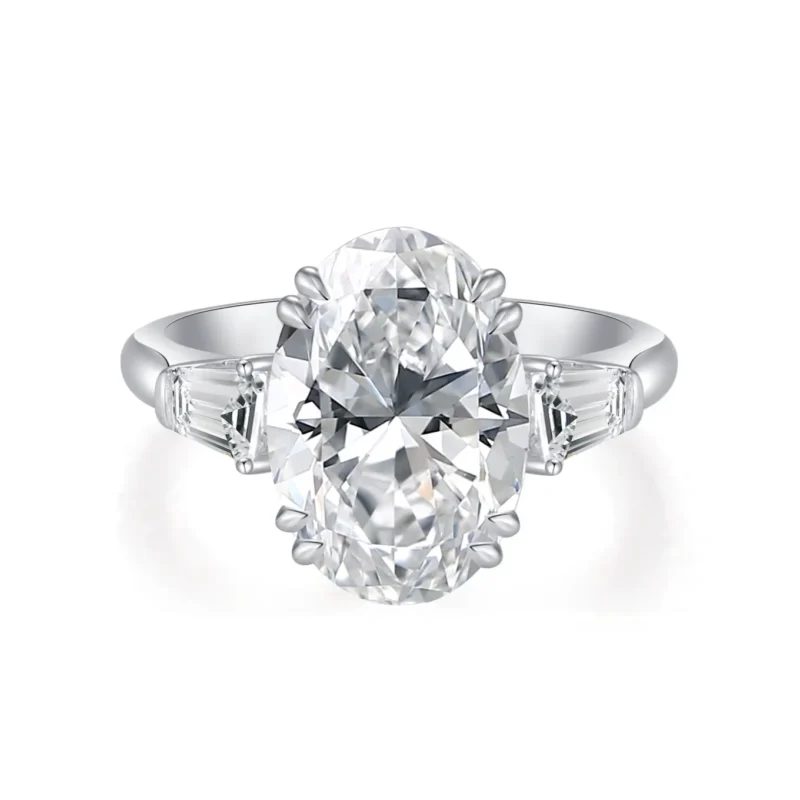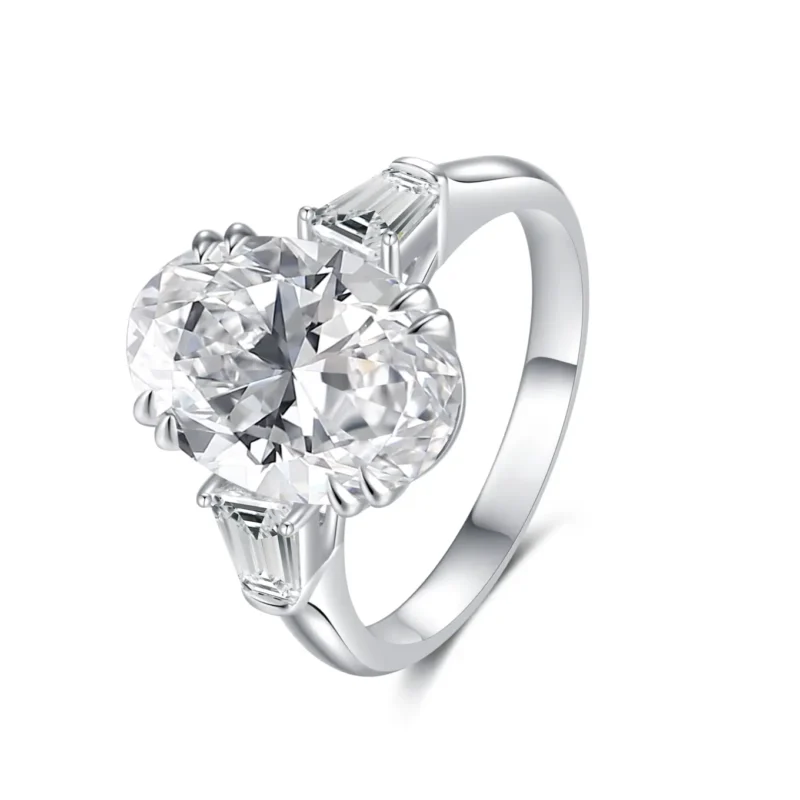Radiant shape diamonds that blend fiery brilliance with striking depth, captivating with every angle. A bold expression of modern luxury and vibrant beauty.
Free customized gift card
Lifetime resizing
Free engraving
Customized stone size
Load more products
Loading...
HELPFUL INSIGHTS
What is Radiant Shape Diamonds
Radiant-cut diamonds are the bold innovators of the jewelry world—a perfect marriage of vintage charm and modern fire. Created in 1977 by master diamond cutter Henry Grossbard, this shape was designed to solve a problem: how to combine the dazzling brilliance of a round diamond with the clean geometry of an emerald cut. The answer? A hybrid masterpiece. Radiants feature 70+ facets—a mix of step-cut edges (like an emerald’s) and triangular brilliant-cut facets (like a round’s)—resulting in a kaleidoscope of white and colored light.
These diamonds come in square or rectangular silhouettes, with their signature cropped corners adding a touch of practicality (no snagged sweaters!) and sophistication. The elongated versions, with length-to-width ratios of 1.1–1.5, create an elegant illusion of longer fingers—a secret weapon for ring shoppers. Radiants are also forgiveness experts: their intricate facet patterns can cleverly hide minor inclusions, making them ideal for buyers who want maximum sparkle without a flawless price tag.
Fun fact: Radiants are chameleons! In square shapes, they rival princess cuts in symmetry; in rectangles, they mimic the glamour of emeralds but with twice the fire. Whether set in a vintage-inspired halo or a sleek solitaire, radiant diamonds refuse to be ordinary.
Why Choose Radiant Shape Diamonds
- Sparkle Savings: Radiant cuts pack the same fiery brilliance as round diamonds but cost 20–30% less. Why? Their shape retains more of the original rough diamond, reducing waste.
- Versatility Supreme: They’re the Swiss Army knife of diamonds. Pair a square radiant with a pavé band for vintage romance, or choose an elongated stone in a bezel setting for modern edge. They even shine in men’s wedding bands!
- Flattery Factor: Rectangular radiants lengthen fingers, while square cuts balance wider hands. Their trimmed corners soften sharp lines, complementing every skin tone and style.
- Durability Wins: Unlike sharp-cornered princess cuts, radiants’ cropped corners resist chipping—perfect for active lifestyles.
- Underdog Appeal: Less common than rounds or ovals, radiants attract trendsetters. They’re the diamond equivalent of a tailored suit: timeless but distinctive.
- Brilliance Boost: With up to 70 facets (vs. 58 in rounds), they scatter light like a disco ball. Even smaller carats look jaw-dropping.
- Ethical Edge: At GLARINS, every radiant diamond is conflict-free and traceable, so your sparkle has a clear conscience.
Radiant Shape Diamonds VS Other Shapes
Round Brilliant: Rounds are the classic crowd-pleasers, but radiants match their sparkle at a lower cost. Rounds lack the geometric drama of radiants’ crisp corners, and their popularity means you’ll pay a premium for the same carat weight.
Emerald Cut: Emeralds offer sleek, hall-of-mirrors elegance but lack radiant’s fiery brilliance. Their open facets also highlight inclusions, whereas radiants’ hybrid facets mask flaws. Radiants win for buyers who crave glamour without perfectionist clarity grades.
Princess Cut: Princess cuts are radiant’s angular cousins, but their sharp corners chip easily. Radiants’ softened edges are safer for daily wear, and their facet patterns throw more colorful fire.
Cushion Cut: Cushions have a vintage, “crushed ice” sparkle, while radiants offer sharper, modern brilliance. Cushions suit romantic styles, but radiants align better with contemporary or art deco designs.
Oval Cut: Ovals elongate fingers like radiants but lack their cornered uniqueness. Ovals also risk a “bow-tie effect” (dark center), whereas radiants’ facet design minimizes this flaw.
The Verdict: Radiants are the ultimate multitaskers—boasting round-like fire, emerald-like geometry, and a price tag that outshines both.
How to Choose the Best
Certification is Key: Always demand a GIA or IGI certificate. These labs grade radiants rigorously for cut, symmetry, and polish—critical for maximizing light performance.
Cut Quality Rules: A poorly cut radiant looks lifeless. Prioritize “Excellent” or “Ideal” grades. Check for even facet patterns and avoid stones with dark zones under the table.
Shape Strategy:
Square radiants (1–1.05 length-to-width ratio) suit symmetry lovers and work beautifully in three-stone rings.
Rectangular radiants (1.1–1.5 ratio) add modern flair; a 1.25 ratio mimics the proportions of a classic emerald cut.
Color & Clarity Hacks:
Radiants hide color better than step cuts. Opt for G–H grades—they face up nearly colorless.
VS2–SI1 clarity is ideal: inclusions are often hidden under facets.
Bow-Tie Detective Work: Use zoomable 360° videos to check for dark bow-tie patterns (common in elongated radiants). A skilled cutter minimizes this by aligning facets precisely.
Setting Synergy:
Halo settings amplify sparkle; bezel settings protect corners.
For vintage vibes, pair with milgrain detailing; for modern edge, try a tension setting.
Ethical Assurance: GLARINS radiants come with blockchain-based provenance tracking, so you know exactly where your diamond began its journey.
FAQ
Are radiant diamonds cheaper than round?
Yes! They often cost 20–30% less due to lower demand and higher yield from rough stones.
Do radiants suit solitaire settings?
Absolutely! Their brilliance shines solo, but halo settings amplify their sparkle.
How to avoid the bow-tie effect?
Choose diamonds with “Excellent” symmetry and review 360° videos before purchasing.
Are radiant diamonds good for engagement rings?
Yes—durable, versatile, and symbolically radiant, just like your love!








